Aug 11
The Fulfillment Factor
Burn Bright Without Burning Out
You are excelling in your career, meeting every deadline, checking off goals but instead of feeling accomplished, you are exhausted. The work that once inspired you now feels draining. You tell yourself it is just stress, but deep down, you wonder: Is this all there is?
Burnout can be due to long hours or a demanding workload, but is also the emotional and mental toll of work that feels devoid of purpose.
Research shows that over 77% of professionals have experienced burnout at some point, yet traditional solutions—vacations, time management, even therapy—often miss the core issue (Vanourek, 2024).
The real antidote? Fulfillment.
Why Burnout and Fulfillment Are Two Sides of the Same Coin
Burnout manifests in many ways: exhaustion, emotional detachment, a decline in creativity, or a creeping sense that your work no longer matters. But at its core, burnout often signals a misalignment between what you do and what you find meaningful. It is the shadow of focusing purely on performance and productivity.
Fulfillment is a deep, intrinsic connection between your efforts and your values. Studies in organizational psychology reveal that individuals with a strong sense of purpose experience lower stress levels, greater resilience, and sustained energy.
In other words, the key to beating burnout isn’t just doing less—it is doing what matters more.
Small Moments, Big Shifts

We often imagine fulfillment as the end result of big wins—a promotion, a completed project, a life milestone. But the truth is, those moments are rare. What fills the spaces in between matters just as much, if not more. It is the brief conversation that sparks an idea you have been stuck on, the laughter shared in a stressful meeting, the quiet satisfaction of knowing you helped someone in a small but meaningful way.
Burnout thrives when we ignore these moments, seeing them as incidental or irrelevant to “real” progress. Yet they are the steady, renewable fuel that keeps passion alive. Fulfillment is not about lowering ambition, it is about widening your lens so you notice the sources of meaning that already exist in your day. When you start valuing these micro-sources of joy as much as the big achievements, you create a built-in buffer against burnout.
The shift is subtle but powerful: you are no longer waiting for a distant outcome to feel energized—you are finding it in the present, in moments you might otherwise overlook. Over time, this reorientation changes the way you measure a good day, a good career, and a good life.
The shift is subtle but powerful: you are no longer waiting for a distant outcome to feel energized—you are finding it in the present, in moments you might otherwise overlook. Over time, this reorientation changes the way you measure a good day, a good career, and a good life.
How to Restore Your Energy and Passion Through Fulfillment
Reignite Your ‘Why’

Burnout thrives in ambiguity. When you lose sight of why your work matters, it becomes easy to disengage. Take a step back and reflect: What originally drew me to this path? What kind of impact do I want to make? Reconnecting with your personal values fuels motivation beyond external rewards.
Shift from Productivity to Purpose
Many professionals fall into the “efficiency trap,” mistaking busyness for progress. Fulfillment is about expanding the mindset to ask not only, “How much did I accomplish today?” but also, “How meaningful was my work today?” Identify the tasks that bring you energy and contribute to long-term impact, along with the necessary and immediate outputs.
Expanding Your Meaning of Success
Many burnout cycles can stem from chasing external validation—titles, promotions, recognition. It can also stem from not meeting those goals despite the work put in. Fulfilled individuals understand the precedence of these factors in life, but they expand their definition of success to include who they are becoming, along with what they are achieving. Redefining success means prioritizing growth, impact, and joy in addition to aiming for career goals. In fact, personal growth and well-being often fuel professional achievement, allowing both to flourish side by side.
Create Restorative Work-Life Boundaries

Rather than separating work and life, reframe boundaries as a way to sustain fulfillment. This could mean protecting creative time, setting tech-free hours, or ensuring your work aligns with your well-being.
Instead of viewing boundaries as restrictions, see them as enablers of deeper engagement in both work and life.
Instead of viewing boundaries as restrictions, see them as enablers of deeper engagement in both work and life.
Take the First Step Toward Fulfillment
Burnout can become unavoidable, if we do not notice that the difference between exhaustion and sustained passion lies in how connected you feel to your work. Fulfillment starts with small, intentional shifts in how you approach your daily life, rather than a radical career change.
Start today by choosing one strategy from this list and commit to it for a week. Notice the difference in your energy, focus, and wellbeing, because burnout is not the end of the story, it is the turning point toward a fuller and brighter life.
Start today by choosing one strategy from this list and commit to it for a week. Notice the difference in your energy, focus, and wellbeing, because burnout is not the end of the story, it is the turning point toward a fuller and brighter life.
References
- Vanourek, D. (2024, August 21). 77% of professionals have experienced burnout in their current. . . | Dora Vanourek | 420 comments [Online forum post]. Link
- Pertel, N. L. (2023, May 10). When Your Employee Tells You They’re Burned Out. Harvard Business Review. Link
- George-Todorov. (2024, April 26). 45 Worrying burnout statistics for 2024. Create & Grow. Link
- Smith, M., MA, & Reid, S. (2025, March 13). Burnout: symptoms, treatment, and coping strategy tips. HelpGuide.org. Link
Empty space, drag to resize
Continue Reading
Write your awesome label here.
Anita Vasudeva
Communications
“Life is, and can be joyous; there is power in the Self and the Community, and we all have the ability to transform our own lives, our work, our world and our responses with awareness, clarity and authenticity.”

Anita brings over four decades of deep and diverse work experience as a Coach, Communicator and Business Professional, to TFI. After 16 years in the corporate tourism industry, she became an entrepreneur who founded the first travel portal in India, set up a business consulting firm, a writing service and communication company, and also founded one of the first enabling platforms for women in India promoting diversity, back to work and flexibility. She co-founded The Foundation for Working Women addressing gender challenges at work, and has been an Advisory member to various social change organizations. For the past decade, Anita has dedicated herself to creating conscious growth through coaching, and to writing and communication.
“It is one life and we must choose to live it to the fullest. It is this belief that drew me to TFI.”
As an ICF Coach and Consultant, Anita has over 2500 hours of coaching experience with business leaders, executives, entrepreneurs, individuals, groups and teams from a range of industries and at different stages of life and growth. Anita draws upon diverse wisdom schools, and studies in a blended approach that responds to the context and reality of life and work. As a Writer and Communication Consultant, Anita has worked with various organizations on communication strategy and guidelines, development of communication collateral and content, and communication training. She has also written corporate and brand biographies and papers, and edited books and papers – business, non-fiction and fiction.
An English Literature major from Lady Sri Ram College, New Delhi with a Social Communications post-graduate from Mumbai University, Anita is currently based in New Delhi. She continues to be a student of change psychology, social transformation, philosophy and spiritual study. Her other interests are theatre, art, language, poetry and media.
Preeti D’mello
Co-founder & PRESIDENT
“The most meaningful way to live and lead is to help others find and sustain their sense of fulfillment”
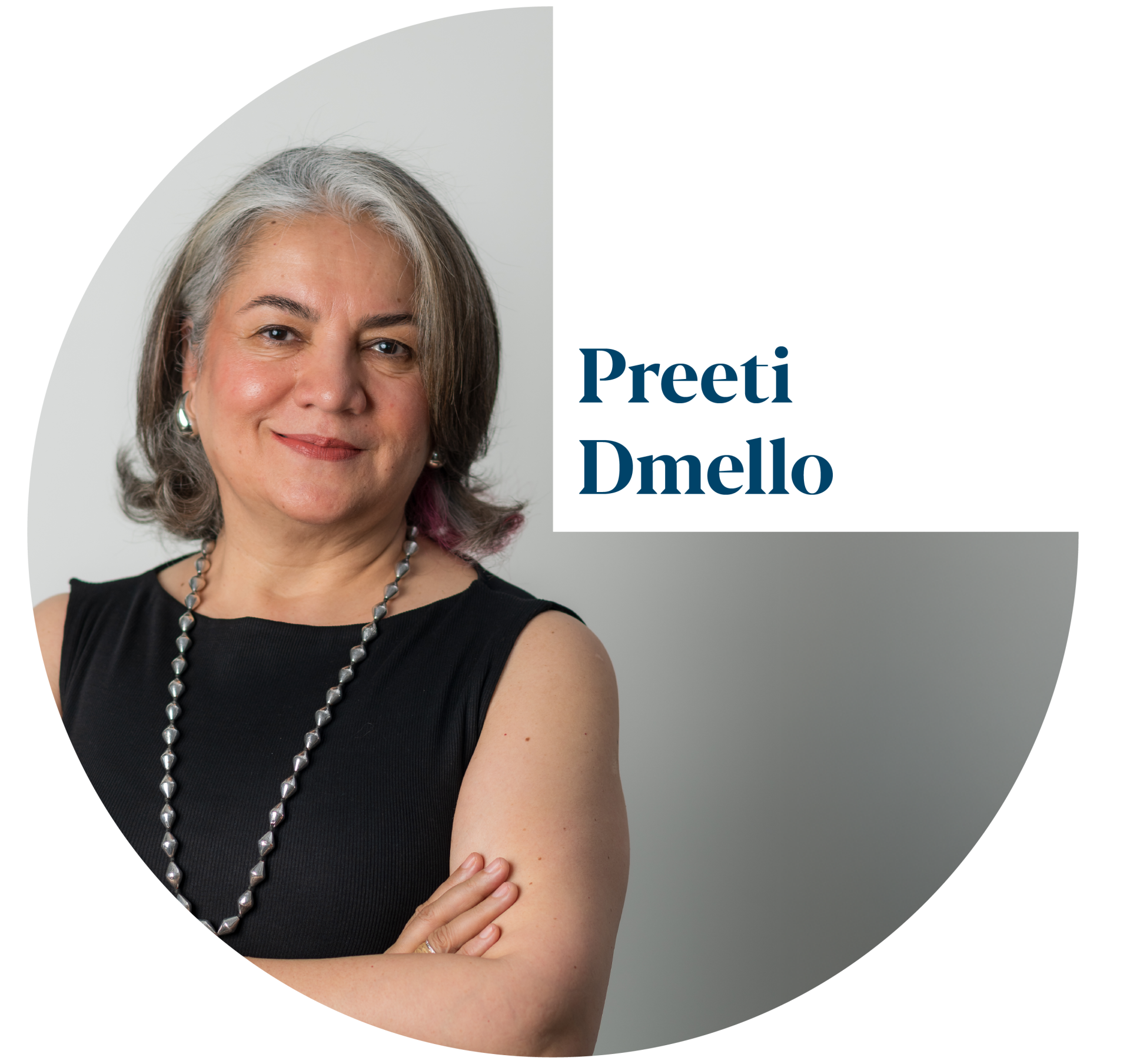
Preeti brings a passionately committed vision, deep expertise and over three decades of work experience to TFI. Recognized for design thinking in systemic organizational and leadership development work, she has a practical and strengths-based orientation to her work, leveraging her experience and understanding of human nature to enable effective turnarounds in personal, business, and leadership challenges.
Preeti’s career of over 35 years spans several industries and sectors – IT Services, Education & Training, International Business, Education Consulting and Publishing. She recently completed a decade-long stint as the Chief Diversity Officer and Global Head of Organizational Development, Leadership Development (LeaD Academy), Coaching, Diversity (DEI) and Culture at TATA Consultancy Services (TCS), where she played a key role in significantly changing the trajectory of DEI with a simple motto – “Inclusion without Exception.” She established the Global Coaching Centre of Excellence as a part of the LEAD Academy and led the DEIJB function as Global Head. Her work is the recipient of the PRISM Award, a gold standard in Coaching from ICF.
Preeti’s career of over 35 years spans several industries and sectors – IT Services, Education & Training, International Business, Education Consulting and Publishing. She recently completed a decade-long stint as the Chief Diversity Officer and Global Head of Organizational Development, Leadership Development (LeaD Academy), Coaching, Diversity (DEI) and Culture at TATA Consultancy Services (TCS), where she played a key role in significantly changing the trajectory of DEI with a simple motto – “Inclusion without Exception.” She established the Global Coaching Centre of Excellence as a part of the LEAD Academy and led the DEIJB function as Global Head. Her work is the recipient of the PRISM Award, a gold standard in Coaching from ICF.
Prior to TCS, she served as Regional Director: South Asia for Pearson Learning Solutions (PLS) and Edexcel International where she re-launched the Edexcel brand in South Asia, achieving 40% growth in 2010 (revenues $6.3M) and increasing school partnerships by 90%.
Preeti is a Professional Certified Coach (PCC) and Organizational Psychologist with over 5000 hours of coaching a compelling contribution to the coaching field via Coach Education, Coach Supervision, Coach Mentoring and one-on-one leadership. Founder of the Gestalt Institute of Asia, where she now plays an advisory role, Preeti is also a member of the Global Board of International Coaching Federation (ICF) - Coaching in Organizations (CIO), and Chair of the Diversity Task Force for the Federation of Indian Chambers of Commerce and Industry (FICCI).
Preeti’s belief is that Coaching is both an art and a science with the potential to inspire transformation at the individual and systemic levels. As a process, she aims to bridge the gap between where people are, where they wish to be, who they are, and who they want to become by enhancing awareness and unlocking an individual’s potential to tap into the innate resourcefulness that every person possesses.
Over time Preeti has had the privilege and opportunity to support individuals, teams, and organizations in exploring resistance, enhancing communication, and promoting resilience and autonomous thinking at an individual level and creating pathways of transformation for systems at the level of groups and teams.
Satyashiv D’mello
Learning & education
“Life is, and can be joyous; there is power in the Self and the Community, and we all have the ability to transform our own lives, our work, our world and our responses with awareness, clarity and authenticity.”
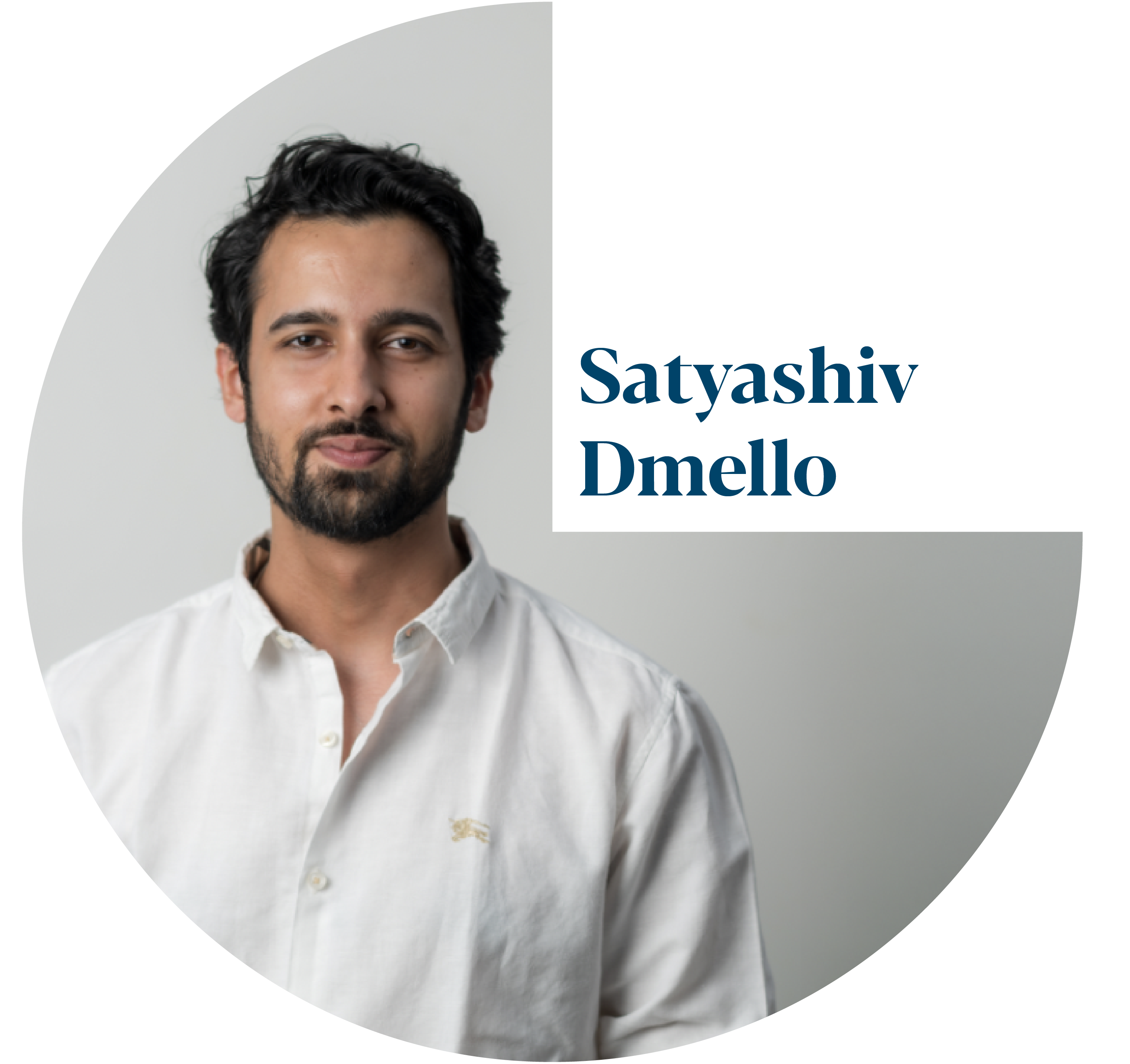
Shiv’s experience as a Coach, his commitment to individual and social well-being, and his deep and diverse studies and research, have inspired his role and work at TFI.
A Professional Certified Coach through the ICF (International Coaching Federation), Shiv has spent the past 10 years working with corporate middle management and emerging leaders across a range of issues, from sharpening their leadership capabilities and navigating change more effectively, to working interdependently with teams and planning ahead for the future of the workplace. His approach integrates positive psychology, neuroscience, Gestalt processes, organisational development, and coaching, which together serve individual, team, and organisational needs.
Shiv is also Founder and Director at YouUbuntu Foundation, a nonprofit that focuses on wellbeing.
Previously, Shiv led the Diversity, Equity, Inclusion & Wellbeing (DEI&W) and Social Sustainability functions for six years at Conscious Development LLC. He has designed, developed and facilitated learning programs for corporates such as Bosch, Netflix, Tata Group, and many others. He also carried out research studies and impact assessments for various Indian and global partners to shape organizational and industry policies.
Shiv graduated from St. Xavier’s College, Mumbai University with a double major in Psychology and Anthropology. He holds an MSC degree in Positive Organization Development and Change from Case Western Reserve University, USA
Siddharth Arora
TECHNOLOGY
“Fulfillment is about aligning purpose with impact—creating solutions that not only address immediate needs but also inspire personal and professional growth. It’s the intersection of meaningful innovation and lasting value."

A Member of the Founding Team, Siddharth brings a dynamic mix of entrepreneurial energy and technical expertise to TFI. With a track record of founding and scaling startups, he co-created Pure Cure + Co., which revolutionized health supplements for over two million customers, and ePaisa, a multilingual mobile point-of-sale app adopted by 100,000 small businesses globally. Previously, Siddharth led groundbreaking projects like managing the digital rights of the Indian Premier League, building innovative platforms for Fortune 500 clients, and setting up teams across continents. His extensive experience in launching and managing large-scale tech initiatives provides a strong foundation for steering TFI's technological advancements.
Siddharth views technology as a powerful enabler of personal development and was inspired by TFI’s vision of leveraging digital tools to make coaching and self-improvement accessible to a global audience.
The TFI Difference

The Fulfillment Institute brings together an exceptional team of highly credentialed, experienced, and innovative coaches. Our faculty:
- Hold advanced certifications from the International Coach Federation and other premier coaching bodies.
- Bring decades of organizational coaching experience across diverse industries and leadership levels.
- Continuously pioneer innovative coaching approaches based on emerging research and best practices.
Richard Boyatzis
Scientific Advisory Council
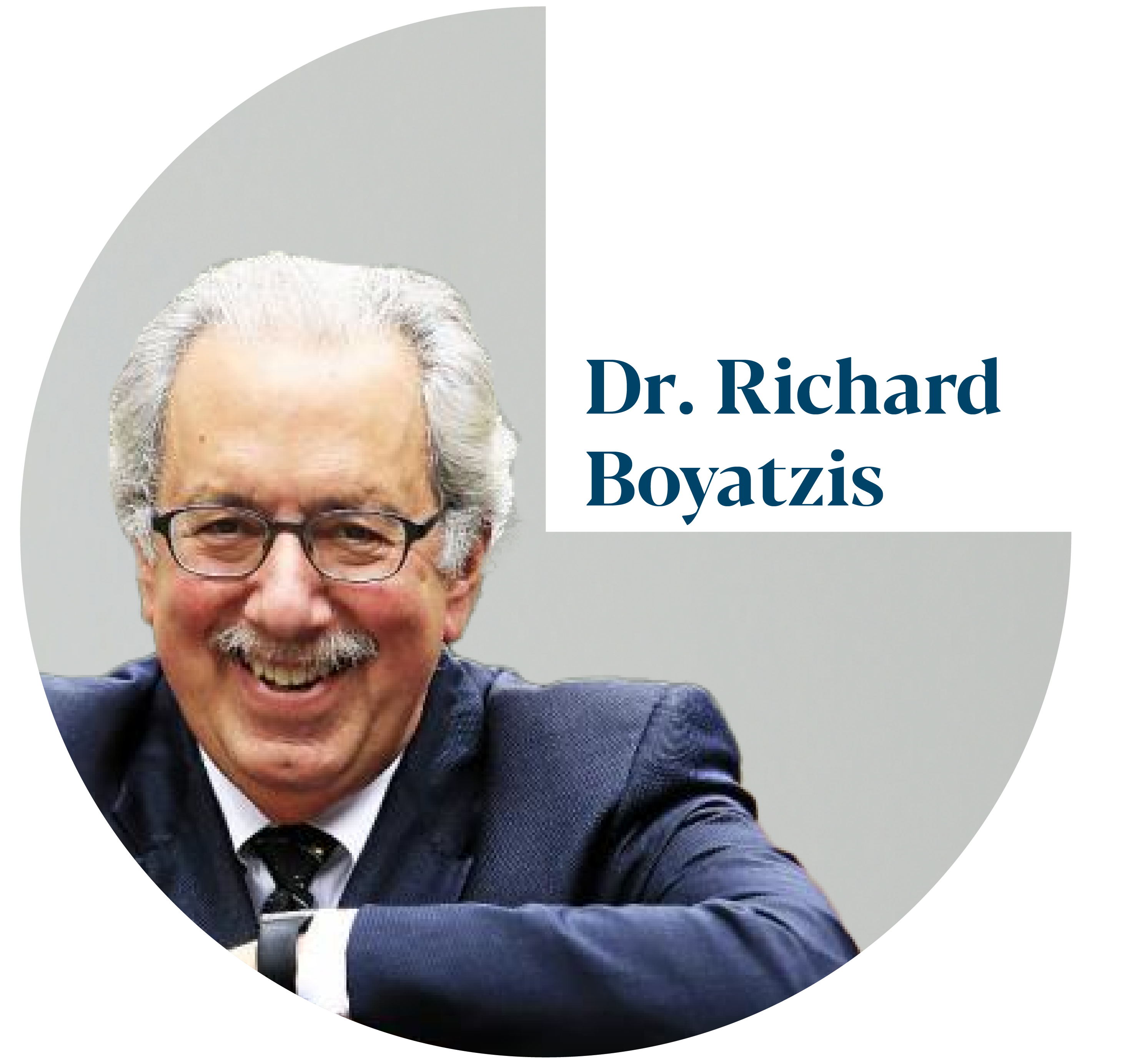
Richard E. Boyatzis is Distinguished University Professor of Case Western Reserve University, and a Professor in the Departments of Organizational Behavior, Psychology, and Cognitive Science. He has a BS in Aeronautics and Astronautics from MIT and Ph.D. in Social Psychology from Harvard. His more than 200 scholarly and 50 practitioner articles examine sustained, desired change on leadership, competencies, emotional intelligence, competency development, coaching, neuroscience and management education. He is ranked in the top 2% of all scientists worldwide by PLOS Biology based on his citations; and the top .05% of all worldwide scientists by Scholar GPS, January 25, 2025. His Coursera MOOCs have over 1 ½ million visitors and enrolled from 215 countries. His 10 books include: the international best-seller, Primal Leadership with Daniel Goleman and Annie McKee; Helping People Change with Melvin Smith and Ellen Van Oosten; and the new The Science of Change: Discovering Sustained, Desired Change from Individuals to Organizations and Communities.
Dr. Anna Tavis
Scientific Advisory Council
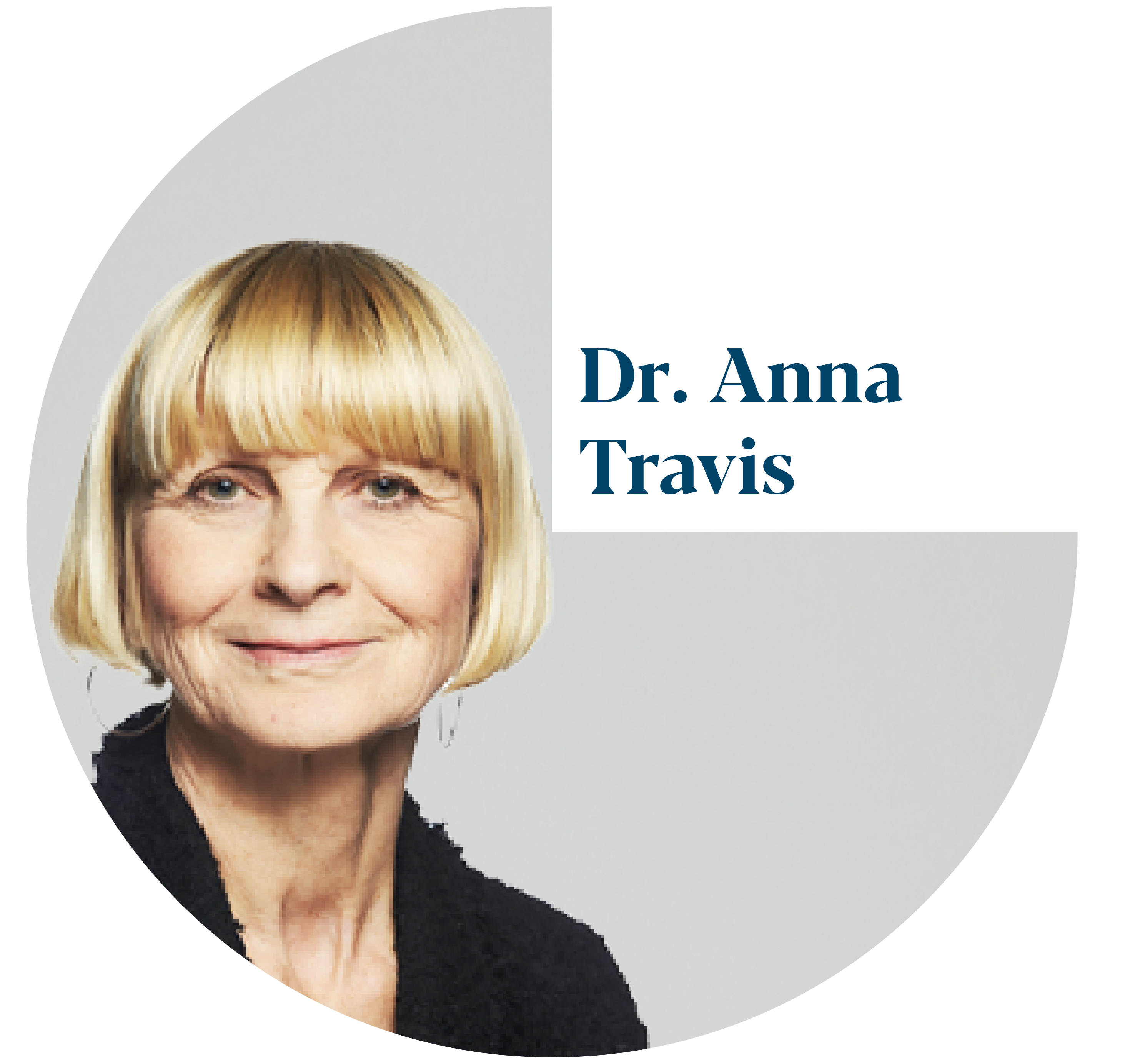
Dr. Anna Tavis is Clinical Professor and Chair of the Human Capital Management Departmentat NYU’s School of Professional Studies. She has been named to Thinkers50 Radar in 2020 and to top 100 Global Influencers in People Analytics in 2023, 2024. Dr. Tavis is the co-author of Humans at Work. The art and practice of creating the hybrid workplace. (Kogan Page, 2022) and The Digital Coaching Revolution (Kogan Page, 2024).
Prior to joining the NYU faculty, Dr. Tavis navigated a diverse global career in business, consulting and academia. In business, Dr. Tavis was the Head of Motorola’s EMEA OD function based in London, Nokia’s Global Head of Talent Management based in Helsinki, United Technologies Corporation’s Chief Learning Officer, and she was the Global Head of Talent and Organizational Development with AIG Investments. In academia, Dr. Tavis was on the faculty at Columbia University, Williams College, and Fairfield University.
Two of Dr. Tavis’ Harvard Business Review articles in collaboration with Dr. Peter Cappelli : “HR Goes Agile” (2018) and “The Performance Management Revolution” (2016) were published in HBR’s “Must Reads” (2016 & 2018), and “Definitive Management Ideas of the Year” (2016 and 2018) and in “Agile: The Insights You Need from Harvard Business Review” (2020).
Dr. Tavis is a frequent presenter at international conferences on the topics of Future of Work; People Analytics and Technology; Employee Experience; and Intelligent Automation in the Workplace. She is a Senior Fellow with the Conference Board and is the Academic in Residence with Executive Networks. She is the former Executive Editor of People+Strategy Journal, a publication of SHRM’s Executive Network and she is currently an Associate Editor of Workforce Solutions Review, a publication of the International Association for Human Resource Information Management and The Journal of Total Rewards, a publication of WorldatWork.
Prior to joining the NYU faculty, Dr. Tavis navigated a diverse global career in business, consulting and academia. In business, Dr. Tavis was the Head of Motorola’s EMEA OD function based in London, Nokia’s Global Head of Talent Management based in Helsinki, United Technologies Corporation’s Chief Learning Officer, and she was the Global Head of Talent and Organizational Development with AIG Investments. In academia, Dr. Tavis was on the faculty at Columbia University, Williams College, and Fairfield University.
Two of Dr. Tavis’ Harvard Business Review articles in collaboration with Dr. Peter Cappelli : “HR Goes Agile” (2018) and “The Performance Management Revolution” (2016) were published in HBR’s “Must Reads” (2016 & 2018), and “Definitive Management Ideas of the Year” (2016 and 2018) and in “Agile: The Insights You Need from Harvard Business Review” (2020).
Dr. Tavis is a frequent presenter at international conferences on the topics of Future of Work; People Analytics and Technology; Employee Experience; and Intelligent Automation in the Workplace. She is a Senior Fellow with the Conference Board and is the Academic in Residence with Executive Networks. She is the former Executive Editor of People+Strategy Journal, a publication of SHRM’s Executive Network and she is currently an Associate Editor of Workforce Solutions Review, a publication of the International Association for Human Resource Information Management and The Journal of Total Rewards, a publication of WorldatWork.
Embracing diverse perspectives to illuminate deeper truths and foster complete understanding.
- Multiple perspectives illuminate complex realities and generate richer solutions.
- Competing worldviews, when authentically engaged, create more complete understanding.
Creating collaborative relationships where value flows in all directions, generating outcomes greater than the sum of individual contributions.
- Mutual exchanges create value greater than what any individual could achieve alone.
- Interdependent relationships foster innovation and sustainable growth for all involved.
Honoring the freedom to choose one's path while embracing responsibility for those choices and respecting others' self-direction.
- Self-direction creates meaningful, lasting impact.
- Freedom includes accountability for our choices.
Cultivating mastery that fulfills our potential and enables meaningful contribution to the world.
- Developing and applying skills fulfills our innate drive for mastery and purpose.
- Skillful contribution enhances personal efficacy and collective capabilities.
Venturing beyond comfortable boundaries with curiosity that transforms understanding and reveals new possibilities.
- Exploring beyond comfort zones unlocks transformative value for individuals and systems.
- New perspectives reshape our understanding of possibilities and potentials.
Venturing beyond comfortable boundaries with curiosity that transforms understanding and reveals new possibilities.
- Exploring beyond comfort zones unlocks transformative value for individuals and systems.
- New perspectives reshape our understanding of possibilities and potentials.
Institute of Coaching at McLean Hospital, Harvard Medical School affiliate, 2022
- Economic Times-HR World, 2023.
- BCG Study cited by Hampel, S.. (2023a, January 24). The 7 benefits of a diverse and inclusive workplace. Inkling.
- BCG Study cited by Hampel, S.. (2023a, January 24). The 7 benefits of a diverse and inclusive workplace. Inkling.
- Pretty, 2024. Project Aristotle: Google’s Data-Driven Insights on High-Performing Teams. https://www.aristotleperformance.com/post/project-aristotle-google-s-data-driven-insights-on-high-performing-teams
- Deloitte Human Capital Trends, 2023. 2025 Global Human Capital Trends. https://www2.deloitte.com/us/en/insights/focus/human-capital-trends.html
- Deloitte Human Capital Trends, 2023. 2025 Global Human Capital Trends. https://www2.deloitte.com/us/en/insights/focus/human-capital-trends.html
- CIPD Study, cited in Maven Clinic, 2025.
- Achleithner, 2023; The Role of Employer Branding in Talent Attraction and Retention, n.d. https://nutrium.com/blog/how-well-being-programs-can-affect-employer-branding/
https://www.mavenclinic.com/post/increase-employee-engagement#:~:text=A%20study%20by%20the%20CIPD,Work%20breaks
- Achleithner, 2023; The Role of Employer Branding in Talent Attraction and Retention, n.d. https://nutrium.com/blog/how-well-being-programs-can-affect-employer-branding/
Stephen Badger
Founder
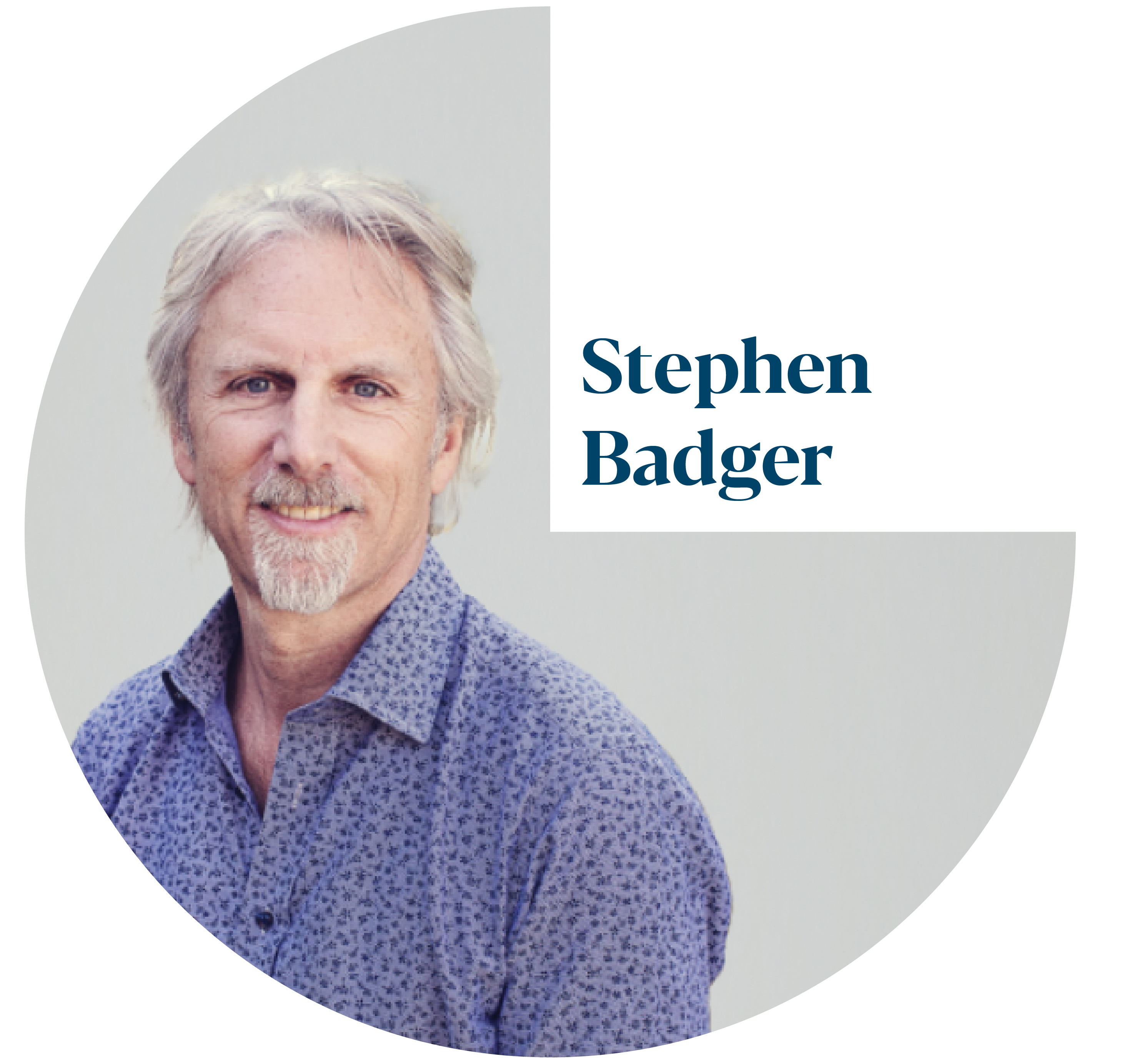
Stephen has a deep passion for the power of coaching, having benefited from it in business as well as life and witnessed its transformative power with many individuals, in both a personal and professional capacity.
He attended Duke University, Reed College, and graduated from Union Institute in Cincinnati with a BA in Anthropology.
Stephen was deeply involved as an investor and ultimately as the President of Seeds of Change, an organic seed and food company, from 1992-2004, before his appointment as the Global Director of Corporate Affairs for Mars, Incorporated. In March of 2008, Stephen joined the Mars Board and became Chairman in 2011, completing his first three-year term. As Chairman, he oversaw the creation of Mars’ first ever 25 year Vision and significantly evolved the Board to be more strategic and intentional. In March of 2017 he assumed the Chairmanship again (rotating off in March of 2020), having overseen the creation of the first Purpose for the company in its history: “The world we want tomorrow starts with the how we do business today.” Stephen also stewarded the creation of the Compass, a four quadrant model with the Purpose at its center that sets targets, which include non-financial metrics like positive social impact.
Stephen is an Advisor to Regeneration VC, in addition to serving on the boards of The Association for Traditional Arts, the Muscle Shoals Music Foundation, and the Economics of Mutuality Foundation.
Stephen also produced the documentary Muscle Shoals, which premiered at the Sundance Film Festival in 2013 to a standing ovation. The film was sold around the world, including to PBS’ premiere network ITVS in the United States. Stephen thrives on time in nature, whether that be hiking, skiing, or mountain biking–and loves doing all three with his son, his partner Beth and friends.
Karl Seitz
Director AND FINANCIAL ADVISOR
"Having everything I need and most of
what I want."
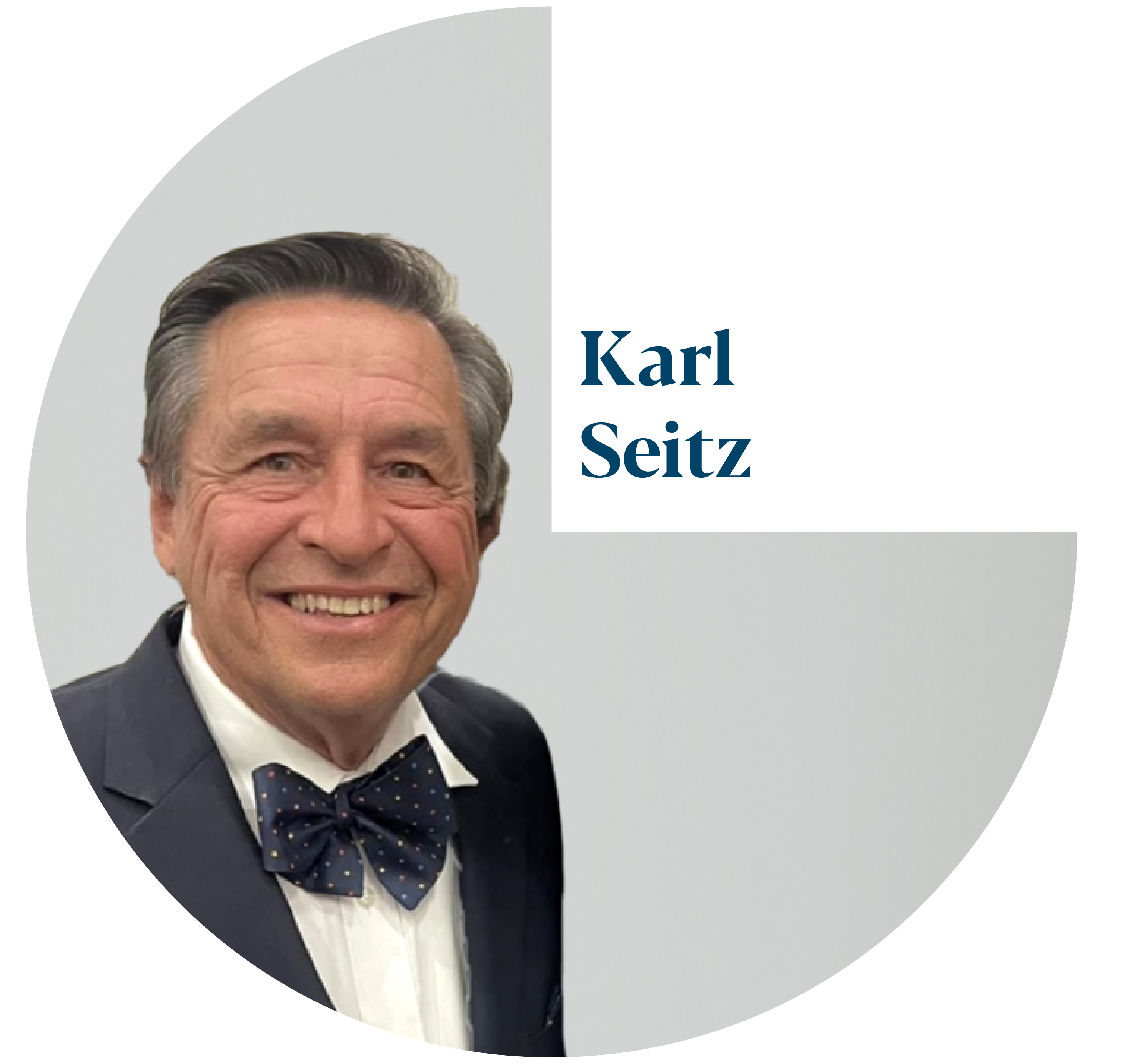
Karl Seitz is a Certified Public Account. He has held finance positions at Arthur Andersen & Co. as a Tax Manager, at Kawasaki Motors Corp. USA as their Controller and at Mars Inc. in various managerial positions.
Jan Rybeck
FPI & Vertical Development
"Fulfillment means to me..
a process, perhaps even a practice of continually waking up to what is true and acting from that place of honest integrity with oneself, others, the environment…..and beyond."

Fulfillment has been the underlying current for most of Jan’s life... both through her 30+ yr professional path as a psychotherapist, master certified coach, leadership and organizational development consultant, mentor, business owner, and meditation leader and throughout her journey as a mother, partner, friend, artist, and student. She has coached hundreds of individuals and teams and delivered development programs for leaders at all levels. She is a partner with Nick Petrie and Carl Sanders Edwards in the creation of the Vertical Mindset Indicator, an AI-enabled tool for building capacity to adapt and respond to complexity, challenge, and change.
Ananya Mishra
Design Strategy
"Fulfillment, to me, is a deep sense of contentment and inner peace that comes from knowing I am living in alignment with my values and passions. It’s not about reaching a specific goal, but about feeling grounded and at peace with my journey—whether I'm creating, learning, or connecting with others. It's the calm that comes from knowing that my work and actions (however big or small) contribute to something greater."

Ananya is a transdisciplinary designer, visual communicator, and futures enthusiast with a passion for using design as a tool for social change. Her practice brings together systems thinking, storytelling, and creative research to make complex ideas more accessible, engaging, and human-centered.
She holds a Bachelor of Design in Information Art and Information Design Practices from the Srishti Institute of Art, Design and Technology, and an MFA in Transdisciplinary Design from Parsons School of Design. Her work spans data storytelling, strategic communications, illustration, and participatory design—often merging data visualization with narrative to spark reflection and dialogue.
Whether crafting tools for social equity or visualizing futures-oriented insights, Ananya focuses on translating complexity into clarity and connection.
With a curiosity for discovery, she finds inspiration in the everyday and believes in thinking big, acting small, and designing with intention.
Raabia Shafi
Coach Bytes & Learning Design
“Fulfillment brings a lightness to how we move through life—it's what happens when we honor our evolving, authentic selves rather than staying fixed in outdated versions of who we once were. It's having the courage to make necessary decisions, even when they won't make everyone happy, and still being able to rest peacefully when our head hits the pillow at night. For leaders I work with, this often means distinguishing between the noise of expectations and the clarity of purpose. Fulfillment isn't some distant philosophical ideal—it's that practical, everyday confidence that comes from matching our actions with our deepest held values while giving ourselves permission to grow and change.”

Executive leaders navigating organizational complexity find their strategic truth-teller in Raabia Shafi. As creator of the Legit Leadership® approach and founder of her NYC MWBE-certified consultancy, Raabia blends two decades of leadership expertise with refreshing directness and nuanced insight. Her diverse client portfolio—from Pentagon officials to Danny Meyer's hospitality empire—enables her to help leaders across industries distinguish between symptoms and root causes, and align stakeholders around value-centered innovation. Known for being curiously collected during high-stress moments, Raabia offers a rare combination: sophisticated, nonjudgmental thinking with genuine warmth, helping executives transform their influence while honoring their natural talents and core values.
Inely Cesna
Fulfillment for couples

Inely Cesna, Esq. is an attorney, mediator, coach, and educator specialized in conflict resolution and leadership development. With advanced degrees in law, dispute resolution, psychology, and spirituality, she integrates legal expertise with deep psychological insight.
She brings over 15 years of experience as in-house counsel for multinational corporations—including Mars, Unilever, and BASF—where she managed global brand protection and enforcement efforts across more than 80 countries. Inely has mediated over 250 cases and has trained professionals at the Los Angeles City Attorney’s Office, LAPD, and SoCal Family Mediation.
As the founder of the Institute for Next Level Leadership (INLLE), Inely provides coaching and training in leadership, communication, conflict resolution, and the harmonization of diverse personality styles. A published author and thought leader, she has written “Critical Axis: Consciousness of Choice in Times of Change” and “Naked Truth: My Journey to Divine Intimacy”. Her academic research “Applying Insights from the Enneagram Model of Spiritual Psychology to Enhance Neutrality and Success in Mediation” is published in thePepperdine Law Dispute Resolution Journal (DRLJ), Vol. XXV, Issue One.
Recognized for her impact, she has been awarded the Certificate of Appreciation from the Los Angeles City Attorney’s Office for strengthening relationships between Los Angeles residents and the LAPD, and the 2025 Pro-Bono Service Honor Roll Award by the Virginia Bar Association.
Oona Shambhavi
Engagement & social Impact Partnerships
“Fulfillment is balance - when I feel like all is where it's meant to be, even when it's not.”

Oona's entrepreneurial career of 15+ years sits at the intersection of sustainability, e-learning, social impact, visual art, and human development. Her fondest roles were in founding Art for Self-Reliance at 18 years of age and using art to build financial self reliance, establishing the operational structure at The Chicago Mosaic School in the windy city, and co-founding MySustainOnline, an ed-tech startup with mission to create accessible ESG training. As past CEO of MySustainOnline for 4 years, she pioneered digital learning solutions in ed-tech making sustainability education accessible globally. Oona’s work is geared towards making a difference through inspiring deeper awareness and action.
Oona's work has been showcased at the G20 Equity Lounge and ESG Summit at CII, with publications in AI Practitioner, Springer Publications, and Vogue. Certified in Emotionally Intelligent Leadership and Executive Coaching, and as an Appreciative Inquiry practitioner, Oona excels at creating transformative learning experiences. Her artistic background informs her innovative approach to problem-solving, while her commitment to human sustainability defines her leadership style—bridging scientific rigor with creative expression to drive meaningful organizational and societal impact.
Lisa May
Neuroscience of change & Innovation
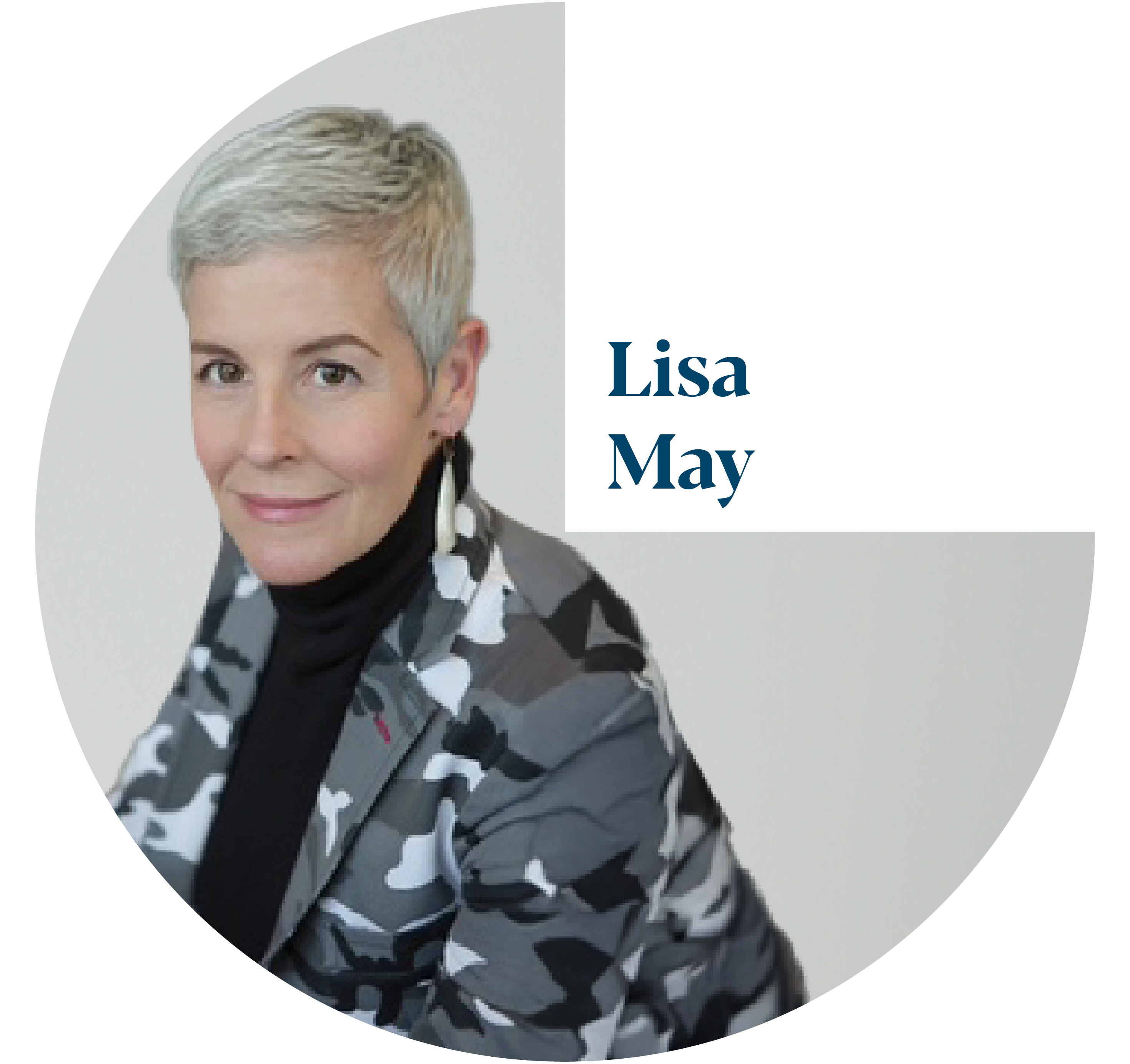
Inspired Human, Innovator, Coach. Lisa brings over 25 years of experience, predominantly in the medical device arena with Johnson & Johnson. Through various roles in sales, operations and executive leadership, she consistently delivered results by maintaining focus on her true passion for people and culture, empowering others to reach new heights. Since 2015, her holistic leadership development company, Fülle, has served to unlock human potential one person, one team, and one organization at a time through proven neuroscience and advanced coaching techniques. Her clients are multi-national companies including Johnson & Johnson, Abbott, Danone, Mars, Givuadan, in addition to many start-ups, globally.
Jessie Kaur
Strategic Partnerships
“To me, fulfilment means a blend of growth and stability—anchored in inner peace and balanced living. I believe in growing from the inside out, nurturing my soul first, which naturally translates into clarity, purpose, and enhanced outcomes in both my personal and professional life. This alignment brings deep joy, lasting satisfaction, and a calm confidence that fuels everything I do”

A results-driven business leader with over 20 years of experience in banking, edtech, and strategic operations, I have consistently delivered revenue growth, led high-performing teams, and driven large-scale transformation initiatives across global organizations. I specialize in setting up & expanding new businesses, leading large global teams leadership development, change management, and developing and executing specialized, collaborative sales strategies with a “ Customer need” based approach. My expertise spans investment banking, retail banking, Edtech and startup strategy, project management, and talent management. Complementing my corporate leadership, I am also an AICC certified coach, Certified Sound Healer, Meditation, Mindfulness and Breathwork expert—offering a well-rounded, people-centric approach to professional growth and organizational success.
Bosco D’mello
Executive coaching
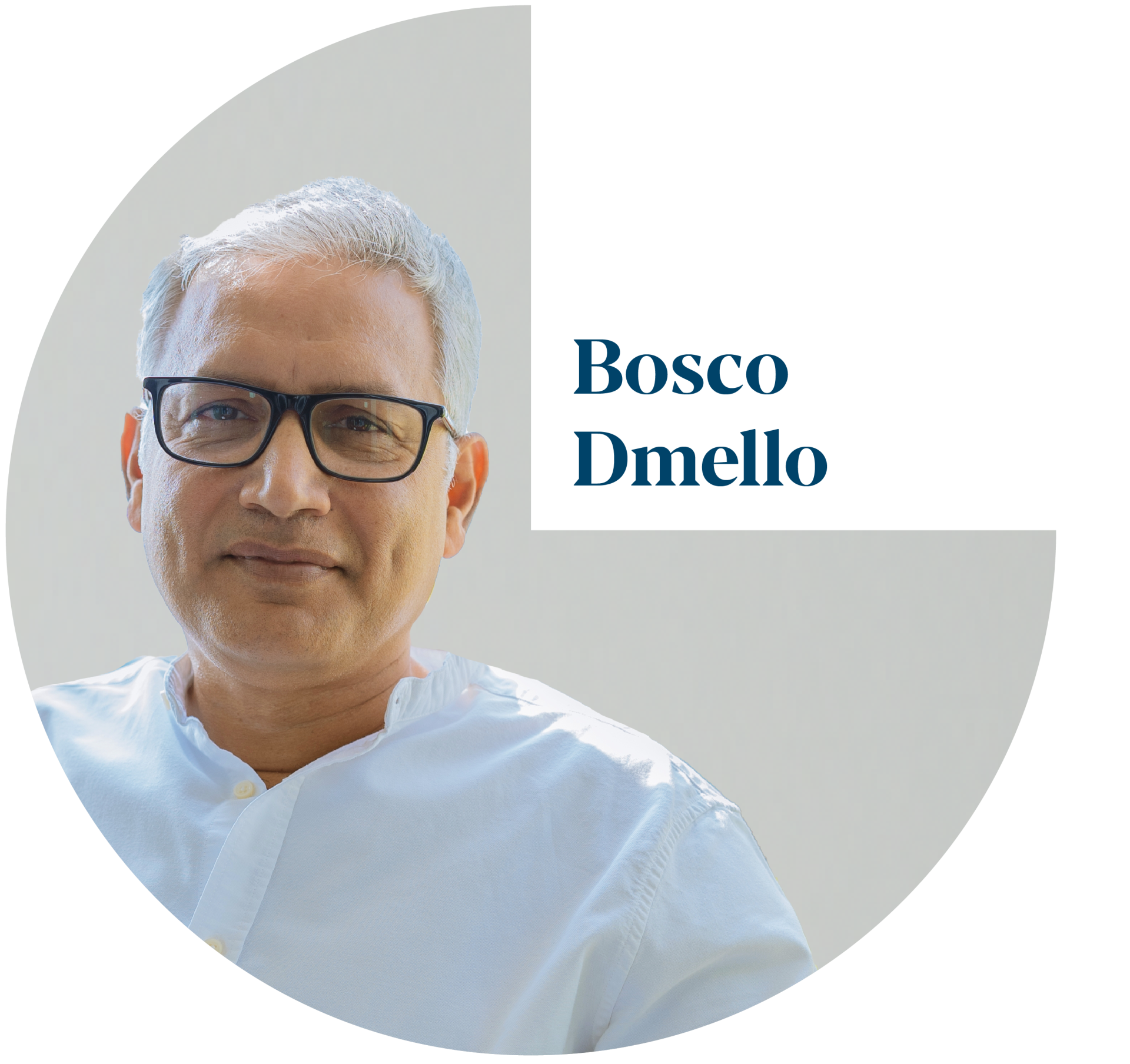
Bosco, founder of Conscious Development, brings over 25 years of expertise in leadership capital development, organizational development, and diversity strategies. His approach integrates Positive Psychology, Polarity Thinking, Neuroscience, and Gestalt Psychology to create bespoke programs that enable leaders to raise their performance ceiling while sustaining growth and resilience.
Bosco has worked extensively with senior leaders across industries, including IT Services, Consumer Durables, Manufacturing, and Financial Services. He has also contributed as a subject matter expert for organizations such as PwC, FICCI, and SHRM. Bosco holds a Master’s in Positive Organization Development from Case Western Reserve University, along with certifications from Harvard, MIT Sloan, and the Gestalt Institute of Cleveland. He complements his professional practice through teaching at institutions including TISS and the Schulich School of Business.
At the heart of his work is a belief in bridging inner and outer life—helping individuals and organizations align who they are with who they can become, enhancing both human and business impact.
Inika Hazarika
research
“To me, fulfillment is the ongoing practice of living in alignment—with our inner truth, with our relationships, with what we offer to the world. It’s not always comfortable or easy—but it’s deeply alive. Fulfillment means noticing the small, quiet moments of connection that remind me I belong—not just to others, but to myself. It’s a balance of self-acceptance and growth. A rhythm of giving and receiving. A deep breath.”

Inika Hazarika is a researcher and creative with a transdisciplinary background in Sociology, journalism, peacebuilding and NGO work. She holds a Master’s in Peace and Conflict Studies from the Tokyo University of Foreign Studies, where her work explored displacement, identity, and grassroots resilience in Northeast India. Inika’s experience spans think tanks, policy institutions, and media—ranging from NITI Aayog and the Observer Research Foundation to Dainik Bhaskar, where she served as the Tokyo Correspondent.
Currently contributing to The Fulfillment Institute, she focuses on weaving narrative research, cross-cultural understanding, and coaching-oriented reflection to explore the contours of fulfillment. She is particularly interested in how people rediscover agency and meaning in moments of transition, loss, and reimagining.
Inika is guided by the belief that fulfillment is not a destination but a relational, evolving practice—rooted in self-awareness, community, and care.
Gautam Tarkunde
finance
“I am a follower of the ancient technique of meditation – Vipassana. Vipassana, which means to see things as they really are, has shaped my perspective about Fulfillment. To me Fulfillment is living life in the moment, doing your best every day, adding value, nurturing relationships, celebrating my and others’ success and learning from failures.”

I’m a books and conscience keeper, a numbers man who enjoys helping businesses grow, solve challenges, and make smart decisions. I’ve worked across diverse industries like telecom, aviation and new age tech companies and different areas of finance - from deal execution to strategic advisory.
Outside of work, I’m always up for quality time with my friends and family, a good workout, or deep dive into a new book or podcast. I’m naturally curious, driven by learning, and value genuine relationships—both in and out of the office. For me, it’s all about staying sharp, keeping things real and interesting, and making an impact where it counts.
Melissa Kelly McCabe
faculty for faculty
To step more fully into lives that are meaningful, purposeful, and full, one must discover and fully embrace their unique attributes, strongest strengths, and inner joy. I feel most fulfilled when I can use my unique gifts and talents in ways that bring out my best self, align with my values, and serve the world around me. This joy extends to others as we creatively collaborate, often in partnership with nature, to explore new perspectives and behaviors, release what no longer serves us, and embrace our authentic selves.
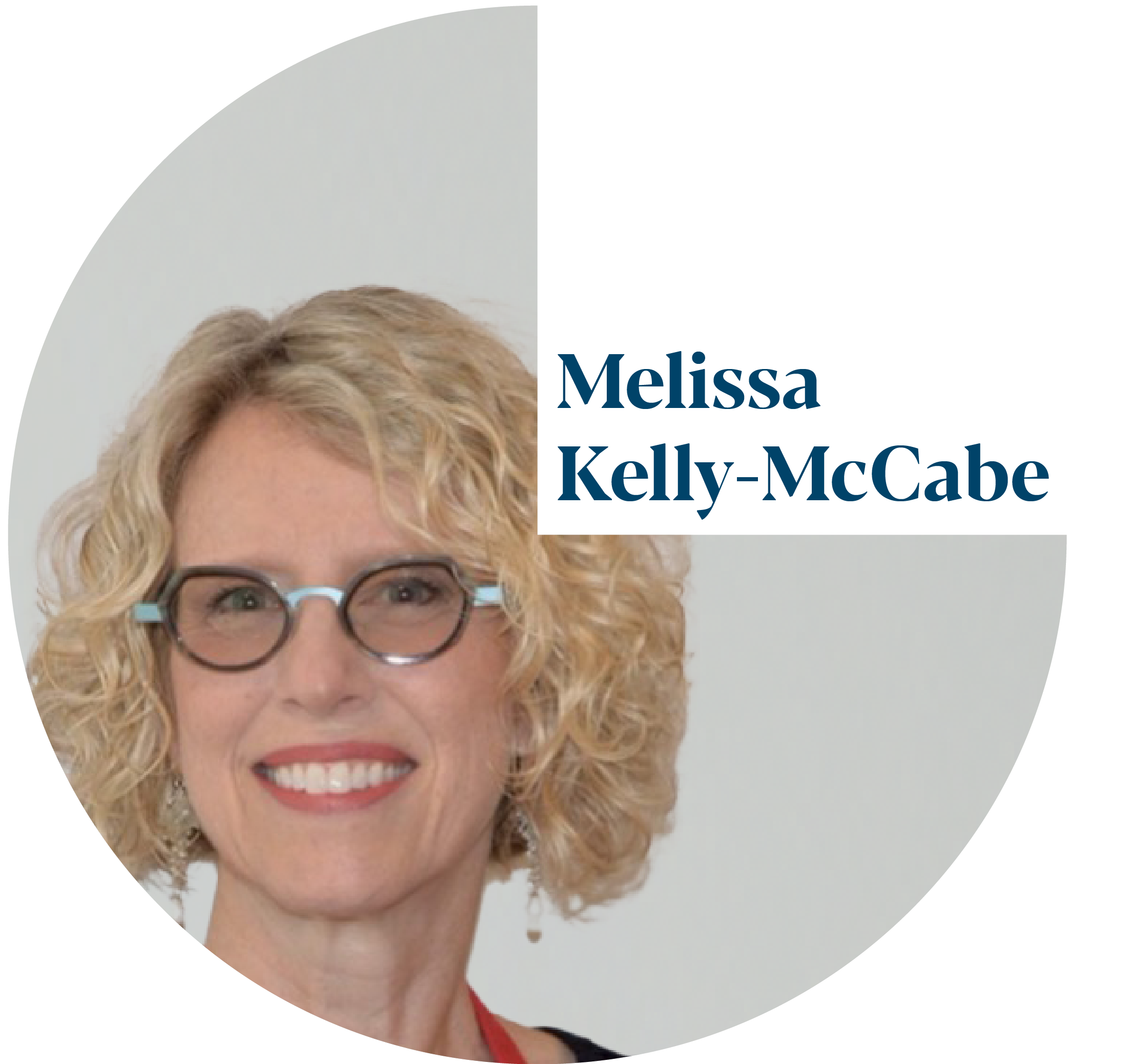
Melissa S. Kelly-McCabe, M.S., ICF MCC, BCC, GPCC™ | Clear Intent Strategy, Inc.
President of Clear Intent Strategy, Inc. and faculty at the Gestalt Institute of Cleveland, Melissa is a master-credentialed, board-certified executive coach. With over 25 years of experience, she coaches leaders, executives, and entrepreneurs to discover and imprint their own style in their work, accelerate attaining their business goals and live their best life. As a Certified Mentor Coach, Melissa teaches coaching skills and mentors seasoned coaches to go deeper with their clients, to bring their own authenticity and presence to their coaching. Melissa is a foodie, a gardener, a skier, and a lover of life. www.ClearIntentStrategy.com
Rhea Baweja
engagement
"Fulfilment isn’t a finish line—it’s the steady, often complicated chase for contentment. It’s about showing up honestly, even when progress feels slow or uncertain. For me, it means embracing discomfort and questioning my own limits, while also recognising when enough is enough. It’s the balance between striving and settling—and finding meaning in that tension every day."

Rhea Baweja is a strategist and writer with nearly a decade of experience across brand, content, and communications. Her work sits at the intersection of structure and storytelling—helping organisations shape how they speak, what they stand for, and how they’re experienced by the world. From early-stage ventures to cultural institutions, she has led narrative development, marketing strategy, and cross-functional creative teams.
At her core, Rhea is driven by clarity—of voice, message, and purpose. She thrives in ambiguity, moves seamlessly between strategy and execution, and believes the right words—deliberate and well-timed—can shape how people think, feel, and act.
At her core, Rhea is driven by clarity—of voice, message, and purpose. She thrives in ambiguity, moves seamlessly between strategy and execution, and believes the right words—deliberate and well-timed—can shape how people think, feel, and act.
Webinar Alert
This is the descriptive text of this dialog box.
Tim Carr
gen Y & Gen Z Coaching
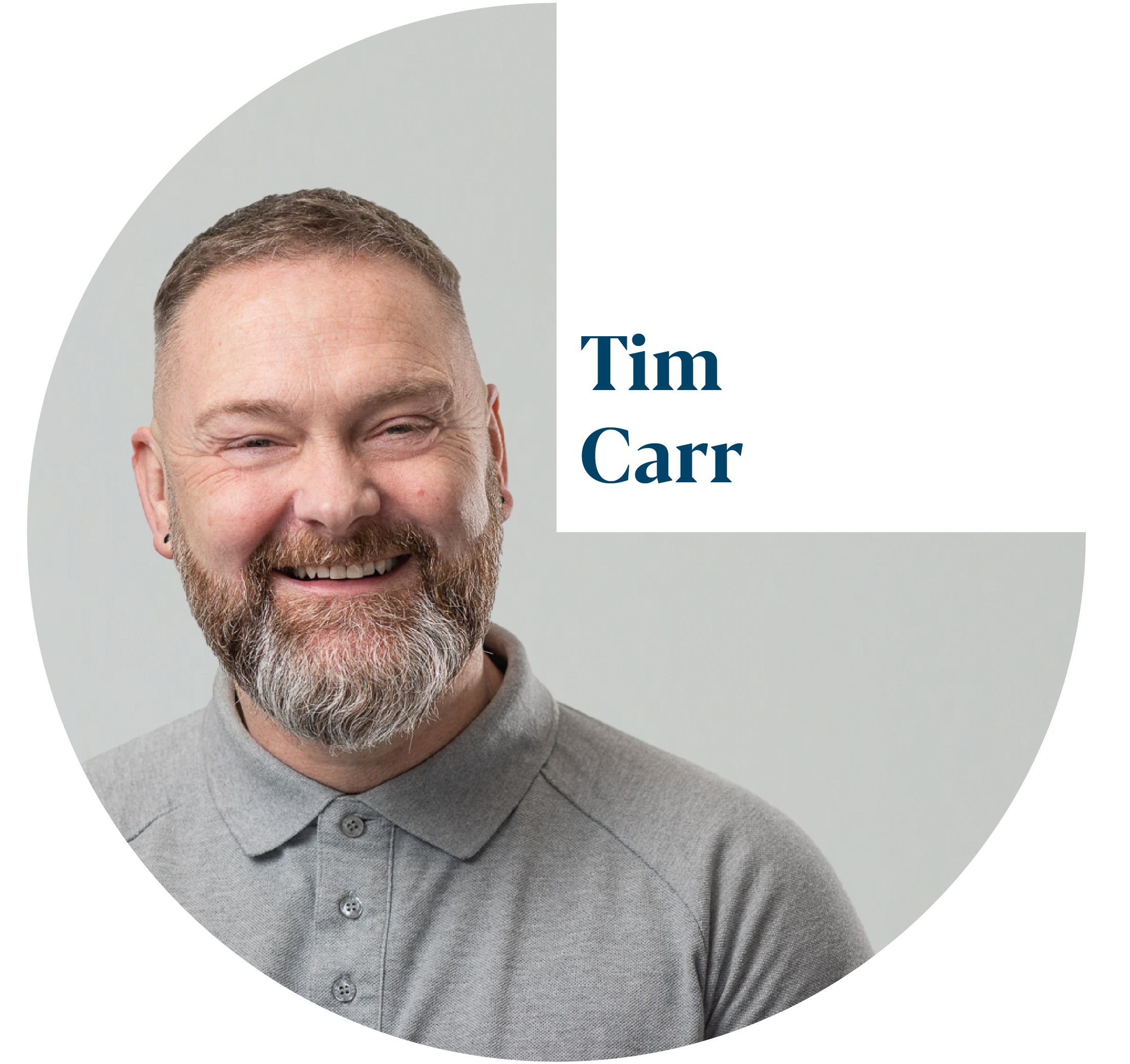
With 40 years in leadership and team development, I'm driven by a passion for cultivating dynamic, inclusive leadership cultures. I empower individuals to understand themselves and their impact on others, fostering environments where everyone thrives.
My company, Boss Like A Buddha, is founded on the belief that a truly happy life stems from profound self-awareness and a shift from autopilot reactions to intentional behaviours. We provide the robust processes you simply weren't taught in school to develop intrigue as to how the challenges we face tap our potential.
I help clients reduce stress and gain crystal-clear outcomes by translating complex psychological theories into meaningful language and visual tools, designed to literally reshape your brain for greater potential. My approach prioritises relationships with self and others by developing trust through powerful, effective communication, always focusing on "what good looks like."
Let's unlock your potential together.
Candice Frankovelgia
fulfillment gatherings
“Fulfillment emerges within individuals and spreads within groups when people give their gifts generously in service of something larger than themselves.”

Candice Frankovelgia is a consulting psychologist and seasoned leadership advisor known for her blend of strategic clarity and human-centered insight. With decades of experience coaching executives and guiding high-stakes dialogue, she helps leaders and teams foster collaboration, shift culture, and grow with intention. Formerly head of coaching at the Center for Creative Leadership, Candice is skilled in assessment, facilitation, and systemic change. She leads Fulfillment Circles and Gatherings—structured experiences designed to spark reflection, connection, and embodied learning. Candice views fulfillment as scalable: it begins within, grows in community, and radiates through organizations to shape a more integrated, meaningful world.
Michael Devlin
leader as coach
“To me, fulfilment is both a moment and a journey. The moment is when you realize that being your authentic self is what matters the most, and you commit to that singular truth. The journey is making sure you never deviate from that realization.”
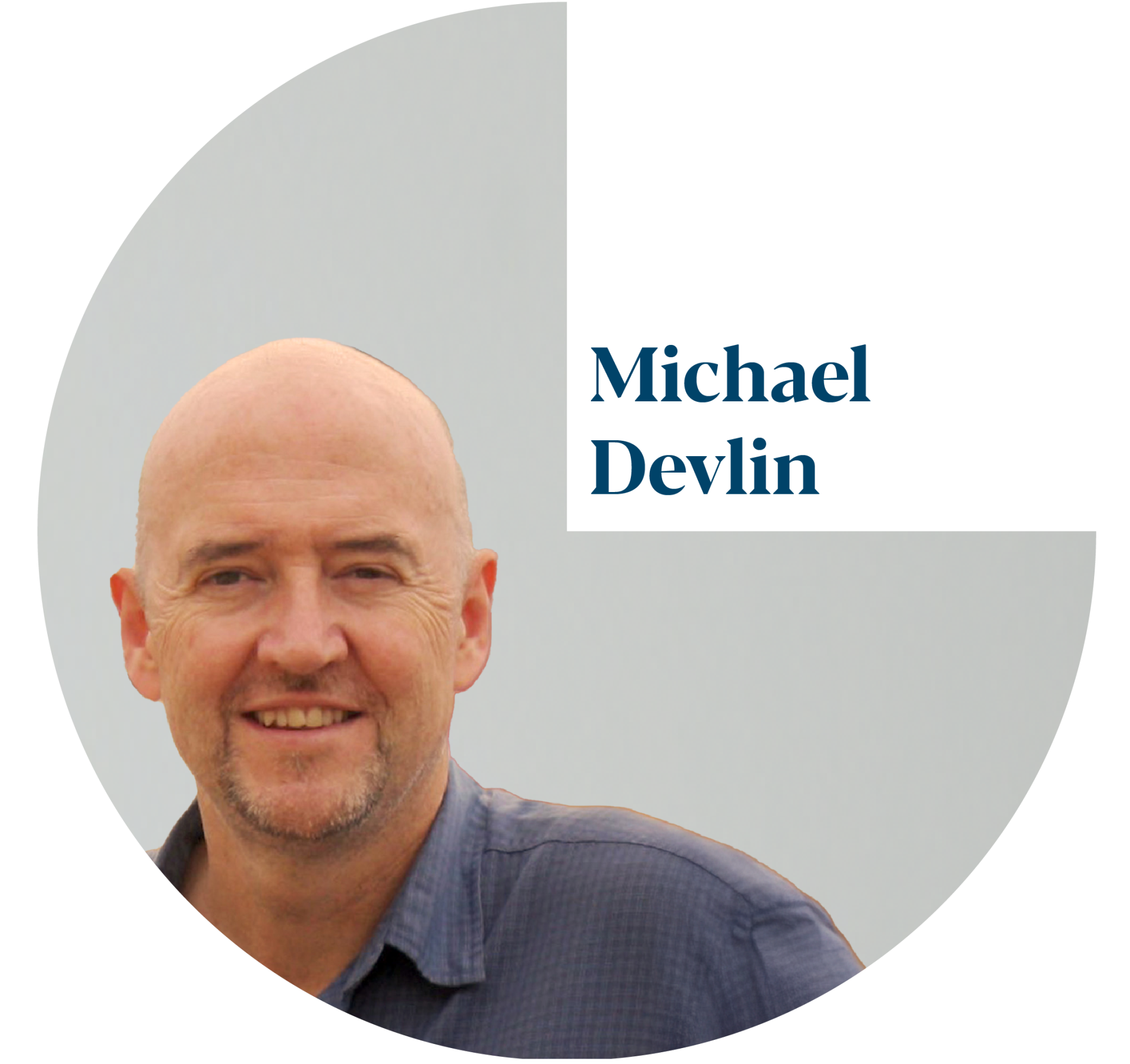
Michael was born and raised in Northern Ireland. He earned his bachelor’s degree from the University of Edinburgh in Scotland, before moving to the United States in 1986. He spent more than 15 years in the manufacturing and entertainment industries before transitioning to academia for ten years. In 2012, he co-founded Athru Services – a consulting firm specializing in strategic planning, leadership development and change management.
Michael takes a very practical approach to his leadership development work. He has spent thousands of hours facilitating learning experiences for a wide range of clients, and he has coached scores of executives from the C-suite to the front line. His passion is helping people discover the joy and satisfaction of building successful working relationships to drive professional and organizational growth.
Sreela Das Gupta
Inclusion & Belonging resource expert

Sreela Das Gupta is the Global Lead Subject Matter Expert (SME) for Diversity Equity Inclusion at Tata Consultancy Services. Sreela has worked extensively for over thirty years in the space of human rights and social inclusion.
With an MPhil in Population Studies, from Jawaharlal Nehru University (JNU), India, Sreela worked for over two decades in the not-for-profit sector, focusing on issues related to gender equity, women’s rights, disability rights, LGBTQ+ rights, and Public Health. Sreela has worked both with rural poor communities; and in the area of policy formulation and strategic planning with organizations like International Centre for Research on Women (ICRW), CARE International, UN Women, USAID, Centre for Policy Research, Oxfam.
Sreela was a Humphrey Fellow in 2000-01 -- a mid-career fellowship funded by the US Congress. Sreela went to the Tulane School of Public Health, New Orleans for her focus area of study on Gender and Public Health.
In her current role at TCS as SME, she works with 600,000 employees across 50 plus countries, focusing on providing insights on DEI concepts and strategies, managing internal and external partnerships, designing inclusive policies/ systems and processes, development of employee resource groups and is engaged in creating, curating and conducting learning sessions for multiple stakeholders to build a culture of inclusion within the company.
She is strategically engaged with national and international platforms for policy formulation and strategic dialogue on diversity, such as ILO (International Labour Organization), UK Disability Forum, Australia Disability Forum, Purple Space, WeConnect and CII (Confederation of Indian Industries) to name a few.
Sreela is on the Board of Transform Schools (India), which works with state governments on gender equity in middle schools. She is also on the Board of National Trust for the Welfare of Persons with Autism, Cerebral Palsy, Mental Retardation and Multiple Disabilities.
She is also a published author of two volumes of poetry, and four murder mysteries.
Sally Breyley Parker
biomimicry
“Fulfillment, for me, is that moment when I realize I'm not separate from nature—I am nature expressing herself through human form. It's the deep peace that comes from aligning my work, relationships, and very being with the same patterns that make forests flourish and rivers find their way to the sea.”
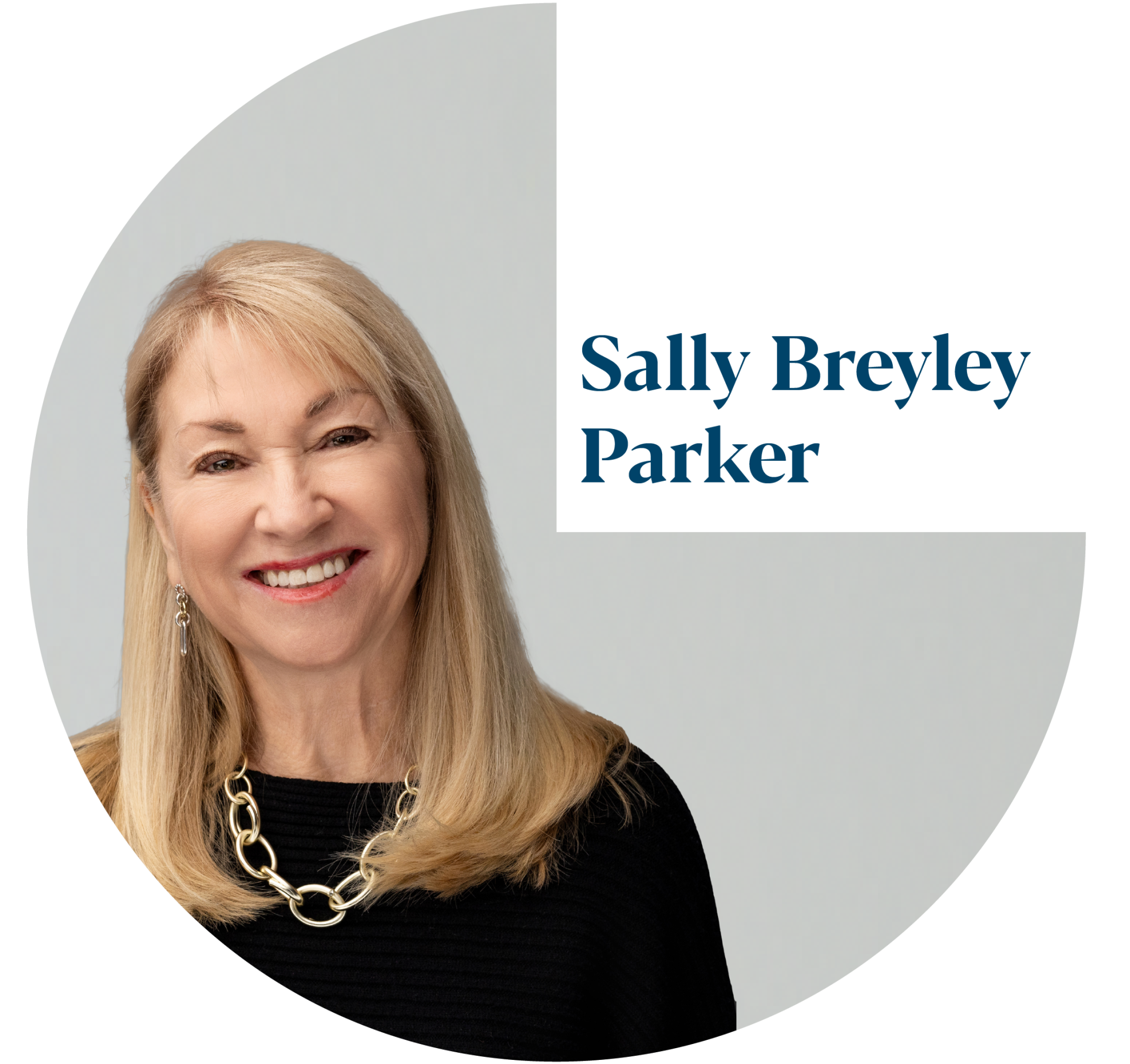
LIVING SYSTEMS & ORGANIZATIONAL FLOURISHING
Sally brings over three decades of pioneering work applying nature's strategies to human systems transformation. As a Gestalt-certified coach, Certified Biomimicry Specialist, and faculty at the Gestalt Institute of Cleveland, she guides individuals, teams, organizations, and cross-sector networks to unleash their innate capacity for flourishing. Her award-winning approach integrates biomimicry, polarity thinking, design thinking, and Theory U, helping systems at every level operate as the living systems they truly are—creating regenerative value while thriving through uncertainty and change.
Sally brings over three decades of pioneering work applying nature's strategies to human systems transformation. As a Gestalt-certified coach, Certified Biomimicry Specialist, and faculty at the Gestalt Institute of Cleveland, she guides individuals, teams, organizations, and cross-sector networks to unleash their innate capacity for flourishing. Her award-winning approach integrates biomimicry, polarity thinking, design thinking, and Theory U, helping systems at every level operate as the living systems they truly are—creating regenerative value while thriving through uncertainty and change.
Andrew Powell
team Coaching
“Fulfillment, for me, comes from helping people and teams “wake up” to their potential. Rooted in my Gestalt background, I believe every system—whether individual or organizational—holds untapped possibility. Change begins with awareness: noticing how we think, feel, and act in the present moment. When clients become more attuned to themselves, they often gain insight, shift perspective, and grow in meaningful ways. Supporting that transformation is deeply rewarding. As Gestalt therapist Arnold Beisser wrote, “Change occurs when one becomes what they are, not when they try to become what they are not.””
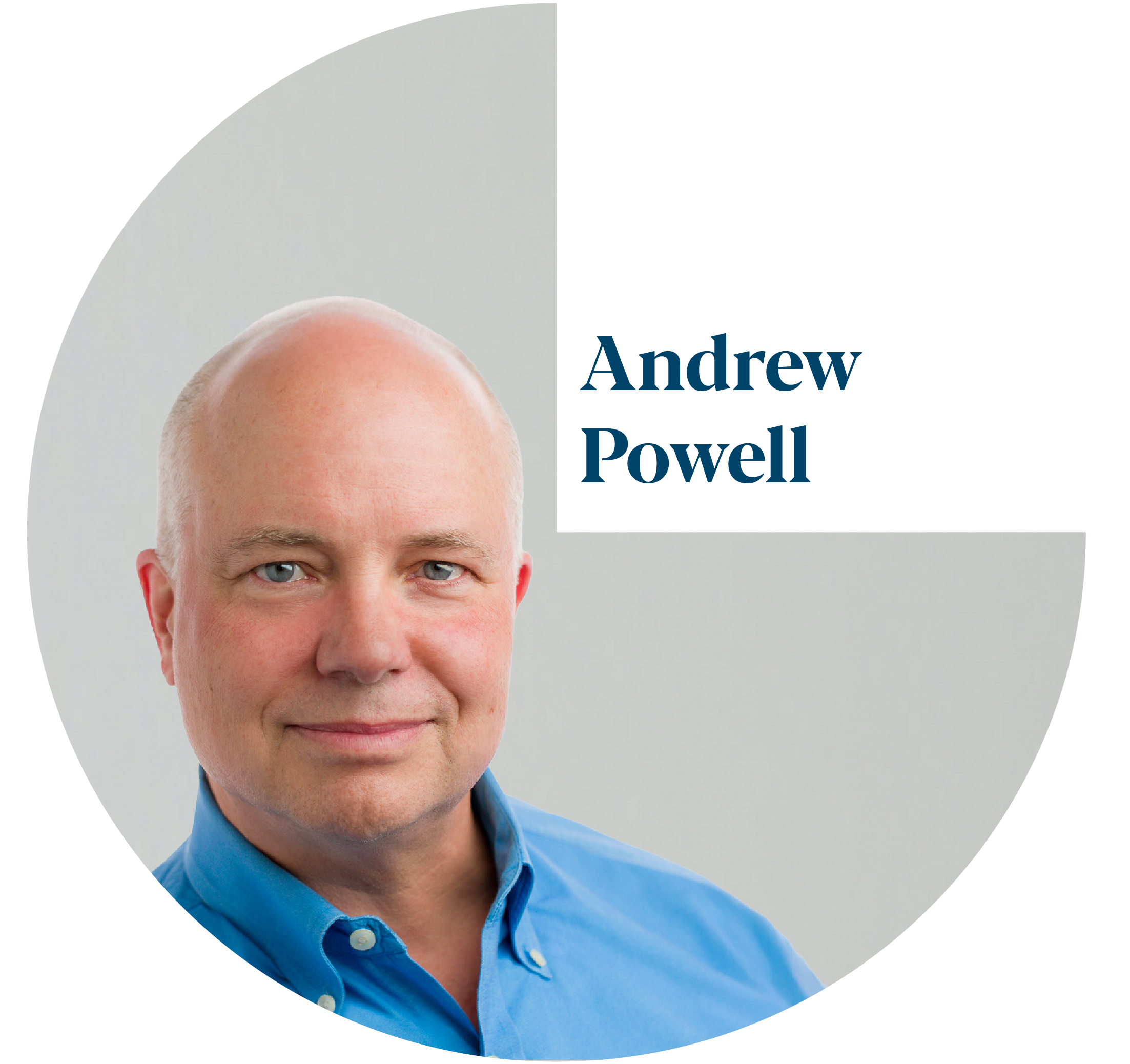
Andy leads Rule 6 Consulting, supporting individuals and teams navigating significant change. With over 30 years of experience—from family-owned businesses to Fortune 50 firms—he blends Gestalt coaching and facilitation with expertise in change and culture transformation. Andy works with clients driven by a higher purpose, believing that business can enable people, communities, and the environment to flourish while achieving exceptional results. He is also on faculty at the Gestalt Institute of Cleveland, teaching in their ICF-accredited Coaching Certification Program, as well as in Relational Team Coaching and Working with Groups and Teams.
Shalin Salecha
L&D Advisory
“Fulfillment, for me, is about living with purpose and alignment. Meditation has been a cornerstone of my journey, helping me connect with clarity and intention in both life and work. I see fulfillment as creating value beyond myself—enabling people, teams, and organisations to achieve their highest potential while staying true to their authentic path. It is about balance, growth, and meaningful impact—where professional success and personal purpose come together.”
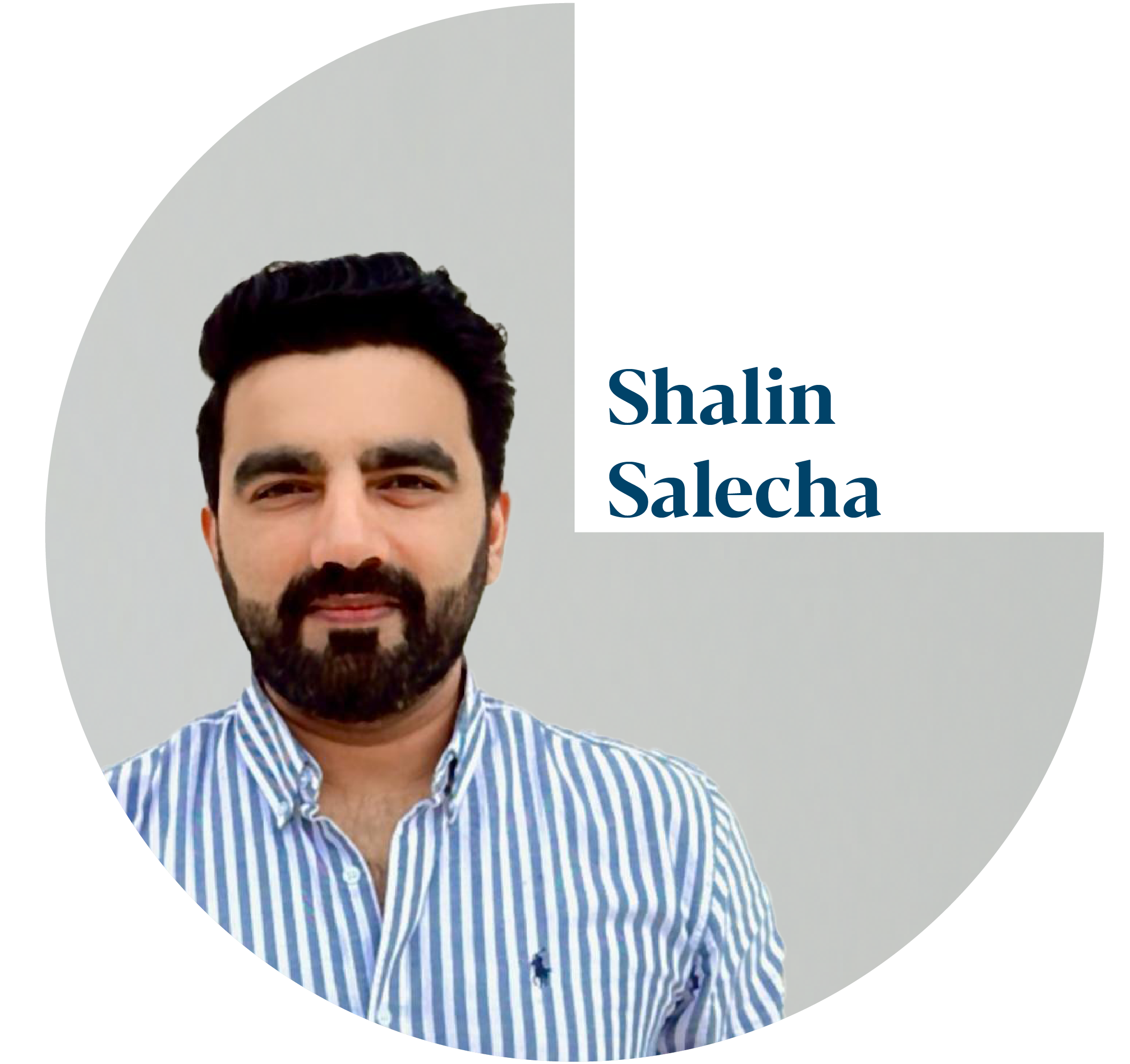
With over 13 years of experience, I have worked across Public Relations, Hospitality, Education, and Edtech, building expertise in business growth, client engagement, and leadership. Nearly a decade of my journey has been in executive education, where I partnered with leading institutions to expand access to transformative learning. My career has been about creating impact at scale—whether by enabling professionals to upskill, helping organisations unlock potential, or building high-performing teams. Having worked across diverse sectors, I bring a cross-disciplinary perspective to growth, always guided by the belief that learning and development can be powerful drivers of both individual and organisational transformation.
Misha Kohli
Strategic partnerships & Coaching
“Striving for perfection or giving my best doesn't necessarily fulfil me. The day could be going well, or be a disaster, but my fulfilment comes from the alignment between my intentions, values, and actions. This alliance makes me feel honest, real, light and easy. ”

Misha is a seasoned leadership expert with over 15 years of experience across McKinsey & Co., Deloitte, and her own L&D venture, GetupGo! Misha has led large-scale initiatives in organisational health, leadership effectiveness, cultural change, building future-ready talent, and diversity & inclusion. She brings deep expertise in building people-centric, high-performing organisations. With background in Organisational Psychology from LSE and LSR (DU), she has impacted over 20,000 individuals through up-skilling, experiential training and coaching. With a lifelong dedication to human potential, she combines strategic insight with empathy and high approachability. Her work spans global markets and industries. A culinary enthusiast, and a devoted mother, she is driven by bringing heart into every role she plays.
Surbhi Solanki
Program Architect
‘Fulfilment to me, is the harmony of inner growth with the warmth of shared joy among friends, the strength of deep family bonds, and the richness of meaningful ties with the community. It is where becoming my best self and belonging to those I love naturally aligns’

Surbhi brings over 9 years of comprehensive HR expertise with a specialized focus on Learning & Development and Talent Management. Having contributed to organizational excellence at industry leaders including Tata Consultancy Services (TCS), Raymond, and Reliance Industries Limited (RIL), Surbhi possesses deep cross-industry insights that enrich every program design and facilitation engagement. This diverse exposure enables a nuanced understanding of varied organizational cultures, learning preferences, and business challenges.
Her expertise spans the full L&D lifecycle—from needs analysis and program design to facilitation, evaluation, and continuous improvement. Her proven track record includes facilitating regular behavioral workshops, designing leadership programs for mid-to-senior leaders, and managing large-scale learning initiatives across diverse employee populations.
Recognised for combining evidence-based instructional design with engaging facilitation styles, Surbhi builds learning environments that drive measurable business impact through practical application and sustainable behavior change across diverse organizational contexts.
Margot Esther Borden
Integral Psychology

Margot Esther Borden, PhD, is a coach, psychotherapist, author, and speaker known for her deep insight into human nature and consciousness. With decades of experience spanning the US, Europe, and India, Margot blends psychological and spiritual traditions to support individuals and organizations in aligning with their authentic selves. Her multicultural background and global perspective shape her work with clients in over 15 countries. Margot’s approach brings clarity, meaning, and transformation to both personal and professional spheres, inviting clients to realize their highest potential and create lasting, positive change.
Gurpreet Kalra
Strategic partnerships, UK & Mea
“Fulfilment is when one can truly flourish.”

Gurpreet believes that L&D should now be called Business and Employee Enablement. He is an L&D super-worker with skills focused on people, such as strategic consulting, change management, systems thinking, influencing stakeholders, and shaping culture. I leverage AI and analytics for digital transformation.
He is a founding member of the Josh Bersin academy, ATD certified coach, Hogan practitioner, HCI certified change management consultant. Fellow of the Learning Performance institute of UK and board advisor for the LPI UK and BBC Maestro.
Gurpreet's efforts centre on enhancing the learning experience through the integration of technology and innovative training methodologies, fostering a modern learning culture.
Gurpreet is onto becoming a PCC.
Gurpreet is based in London .
Meha Haria
Visual Design
“Fulfilment, to me, is the feeling of being my happiest, most confident self. It’s when purpose and action align, and the road ahead stops looking like a maze and starts looking like a map. It appears in small flashes of clarity that connect long-standing questions, and in that quiet inner nod that says, Yes — this is exactly where I’m meant to be.”

I’m Meha Haria — a brand designer, illustrator, and creative problem solver passionate about turning ideas into visual stories that move people. With a Master’s in Strategic Design and Brand Management from Srishti Institute of Art, Design and Technology, I bring a research-driven, systems-thinking approach to every project. Over the past eight years, I’ve collaborated with diplomatic organizations and global delegates to bridge cultures through thoughtful communication and design. I believe design should feel intuitive, human, and impactful. Curious by history and inspired by nature, I craft meaningful visual experiences that spark connections.
